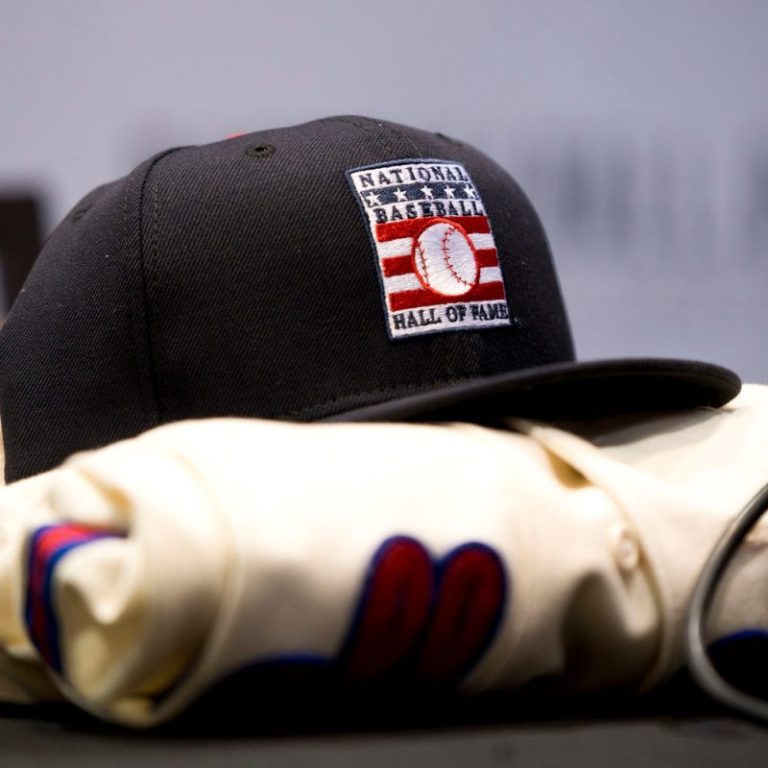Come Sunday evening, by decree of 16 committee members rather than hundreds of voters, Barry Bonds could end up in a place so elusive to reach:
Baseball’s Hall of Fame.
The Hall’s 16-member Era Committee, comprised of former players, baseball executives, media members and historians, will meet Sunday in San Diego and consider the candidacies of eight players who failed to earn election in up to 10 years on the Baseball Writers’ Assn. of America ballot.
While the committee route – it was known informally for years as the Veterans’ Committee – can be viewed as something of a back door into Cooperstown, its honorees nonetheless carry the same distinction as those voted in with dispatch: Hall of Famer.
A look at the committee, its process and how and why players like Bonds and Roger Clemens may or may not find an easier ride down this road:
Who’s on the ballot?
Bonds, the seven-time Most Valuable Player, and Clemens, the seven-time Cy Young Award winner, lead a group of eight players that the Contemporary Baseball Era Players Committee will consider. That committee reviews the candidacies of players ‘whose primary contribution to the game came from 1980 to the present,’ according to the Hall of Fame.
The other six players: Sluggers Albert Belle, Fred McGriff, Don Mattingly, Dale Murphy and Rafael Palmeiro, and pitcher Curt Schilling.
How do they earn election?
Just like the writers’ ballot: Candidates need 75% of the vote. In this case, though, that means 12 yes votes from just 16 votes committee members compared to the hundreds of votes needed from baseball writers. In 2021, a player needed to be named on 296 of 394 ballots cast by 10-year members of the BBWAA.
Only Boston Red Sox slugger David Ortiz reached that plateau, with 307 votes. Bonds, in his final year on the writers’ ballot, received 260 votes, the 66% marking his strongest performance in his 10th and final year. Clemens received 257, and 65.2%.
Who votes in the veterans committee?
At least in part, a jury of their peers.
The committee includes seven former players, all who played at least a portion of their career with the nominees: Chipper Jones, Greg Maddux, Jack Morris, Ryne Sandberg, Lee Smith, Frank Thomas and Alan Trammell. Perhaps notably, Jones and Maddux were Atlanta Braves teammates of McGriff, who hit 493 home runs yet peaked at just 39.8% of the vote in 2019, his final year on the writers’ ballot.
There are also a half-dozen members or former members of various executive branches, including Los Angeles Angels owner Arte Moreno, former Blue Jays president and MLB exec Paul Beeston, longtime GM and club president and current MLB consultant Theo Epstein, club presidents Ken Williams (White Sox) and Dave St. Peter (Twins), BBWAA past presidents Susan Slusser and LaVelle Neal and historian Steve Hirdt.
If they get in, are they Hall of Famers?
Sure thing. They’ll, if inclined, be introduced at a Monday press conference, presented with a campy ‘Hall of Fame’ jersey and get their moment in front of thousands of baseball aficionados at July’s induction ceremony in Cooperstown.
It seemed there was a greater, if not stigma, then qualifier that a player made it in via a veteran’s committee rather than the writers’ vote. But as time goes on and the Hall streamlines its era committees and electees are trotted out, the distinction seems to lessen.
Consider the seven Hall of Famers on the voting committee: Four were voted in by the writers, while three made it via committee. Can you remember which way they all got in?
Why didn’t they make it the first time?
Steroids, of course!
OK, so it’s not that simple. But Bonds’ and Clemens’ strong ties to performance-enhancing drug use – via federal drug trials stemming from the BALCO trial and Clemens’ disputed congressional testimony – had a serious drag on their otherwise overwhelming Hall of Fame cases.
And while he was never connected to PED use, McGriff was something of a victim of his time, in that his consistent power and lofty career homer total were dwarfed in an era when lesser players could pop 50 homers and barely cause a ripple.
That Jones, Maddux and Thomas played their prime years in the heart of the so-called steroid era – and other players on the committee spent their twilights in it – will add a fascinating wrinkle to the process.
So, what happens?
Perhaps not much. This is truly uncharted territory, when the legacies of stained players is handed to a committee inside a room, rather than to electors mailing in anonymous (if they desire) ballots.
Bonds and Clemens couldn’t get to Cooperstown through the U.S. mail, but the concept remains: Gaining consensus from 75% of humans in any group is challenging. Throw in the many shades of gray and the ability for the committee to simply kick the can down the road and let someone else pick it up in 2025.
If nothing else, it ensures that all the agita from the Bonds-Clemens cases will live on well into the decade.

